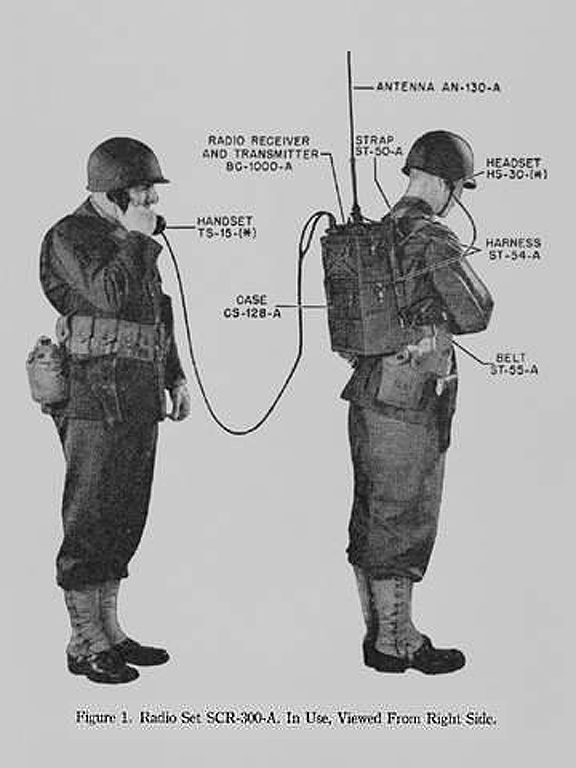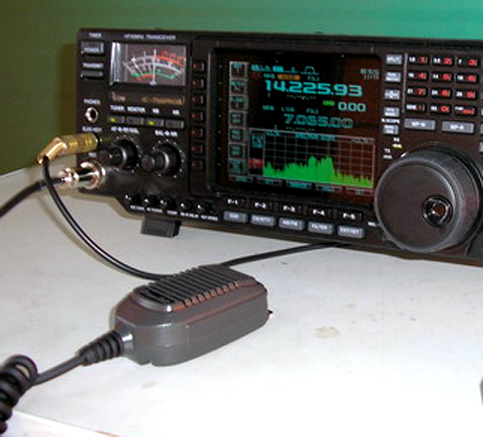|
Duplex (telecommunications)
A duplex communication system is a point-to-point system composed of two or more connected parties or devices that can communicate with one another in both directions. Duplex systems are employed in many communications networks, either to allow for simultaneous communication in both directions between two connected parties or to provide a reverse path for the monitoring and remote adjustment of equipment in the field. There are two types of duplex communication systems: full-duplex (FDX) and half-duplex (HDX). In a full-duplex system, both parties can communicate with each other simultaneously. An example of a full-duplex device is plain old telephone service; the parties at both ends of a call can speak and be heard by the other party simultaneously. The earphone reproduces the speech of the remote party as the microphone transmits the speech of the local party. There is a two-way communication channel between them, or more strictly speaking, there are two communication channel ... [...More Info...] [...Related Items...] OR: [Wikipedia] [Google] [Baidu] |
Donald Hings
Donald Lewes Hings, (November 6, 1907 – February 25, 2004) was a British-Canadian inventor, born in Leicester, England. In 1937 he created a portable radio signaling system for his employer CM&S, which he called a "packset", but which later became known as the "Walkie-Talkie". While Hings was filing a U.S. patent for the packset in Spokane, Washington in 1939, Canada declared war on Germany. CM&S sent Hings to Ottawa to redevelop his new invention for military use, and he worked there from 1940 to 1945. During these years, he developed a number of models, including the successful C-58 Walkie-Talkie which eventually sold eighteen thousand units produced for infantry use, and for which he received the MBE in 1946 and the Order Of Canada in 2001. Following the war, he moved to Burnaby, British Columbia, where he established an electronics R&D company, Electronic Labs of Canada. He continued researching and creating in the fields of communications and geophysics until his ... [...More Info...] [...Related Items...] OR: [Wikipedia] [Google] [Baidu] |
SCR-300
The SCR-300, designated AN/VRC-3 under the Joint Electronics Type Designation System, was a portable frequency modulated (FM) radio transceiver used by US Signal Corps in World War II. This backpack-mounted unit was the first radio to be nicknamed a " walkie talkie". History In 1940, Motorola (then the Galvin Manufacturing Company) received a contract from the War Department to develop a portable, battery powered voice radio receiver/transmitter for field use by infantry units. The project engineering team consisted of Daniel E. Noble, who conceived of the design using frequency modulation, Henryk Magnuski who was the principal RF engineer, Marion Bond, Lloyd Morris, and Bill Vogel. The SCR-300 operated in the 40.0 to 48.0 MHz (megahertz) frequency range, and was channelized. Along with other mobile FM tank and artillery radios such as the SCR-508 (20.0 to 27.9 MHz) and the SCR-608 (27.0 to 38.9 MHz), the SCR-300 marked the beginning of the transition of combat-net ra ... [...More Info...] [...Related Items...] OR: [Wikipedia] [Google] [Baidu] |
Henryk Magnuski
Henryk Władysław Magnuski (January 30, 1909 – May 4, 1978) was a Polish telecommunications engineer who worked for Motorola in Chicago. He was a primary contributor in the development of one of the first Walkie-Talkie radios, the Motorola SCR-300, and influenced the company's success in the field of radio communication. Early years Magnuski was born on January 30, 1909, in Warsaw. Having lost both parents at a relatively early age, he supported himself and his sister, Janina, by fixing and installing radios for the Polish military. He received his degree from Warsaw University of Technology in 1934 and started working for the ''State Tele- and Radiotechnical Works'' (''Państwowe Zakłady Tele i Radiotechniczne'') in Warsaw. In June 1939 he was sent by his company to New York, New York, New York in order to study the latest American projects of radio transmitters. Soon after his arrival to the United States, Poland was invaded by Germany and World War II broke out. His return ... [...More Info...] [...Related Items...] OR: [Wikipedia] [Google] [Baidu] |
Motorola
Motorola, Inc. () was an American multinational telecommunications company based in Schaumburg, Illinois. It was founded by brothers Paul and Joseph Galvin in 1928 and had been named Motorola since 1947. Many of Motorola's products had been radio-related communication equipment such as two-way radios, consumer walkie-talkies, cellular infrastructure, mobile phones, satellite communicators, pagers, as well as cable modems and semiconductors. After having lost $4.3 billion from 2007 to 2009, Motorola was split into two independent public companies: Motorola Solutions (its legal successor) and Motorola Mobility (spun off), on January 4, 2011. Motorola designed and sold wireless network equipment such as cellular transmission base stations and signal amplifiers. Its business and government customers consisted mainly of wireless voice and broadband systems (used to build private networks), and public safety communications systems like Astro and Dimetra. Motorola's h ... [...More Info...] [...Related Items...] OR: [Wikipedia] [Google] [Baidu] |
Microphone
A microphone, colloquially called a mic (), or mike, is a transducer that converts sound into an electrical signal. Microphones are used in many applications such as telephones, hearing aids, public address systems for concert halls and public events, motion picture production, live and recorded audio engineering, sound recording, two-way radios, megaphones, and radio and television broadcasting. They are also used in computers and other electronic devices, such as mobile phones, for recording sounds, speech recognition, Voice over IP, VoIP, and other purposes, such as Ultrasonic transducer, ultrasonic sensors or knock sensors. Several types of microphone are used today, which employ different methods to convert the air pressure variations of a sound wave to an electrical signal. The most common are the dynamic microphone, which uses a coil of wire suspended in a magnetic field; the condenser microphone, which uses the vibrating Diaphragm (acoustics), diaphragm as a capacitor ... [...More Info...] [...Related Items...] OR: [Wikipedia] [Google] [Baidu] |
Two-way Radio
A two-way radio is a radio transceiver (a radio that can both transmit and receive radio waves), which is used for bidirectional person-to-person voice communication with other users with similar radios, in contrast to a broadcast receiver, which only receives transmissions. Two-way radios usually use a half-duplex communication channel, which permits two-way communication, albeit with the limitation that only one user can transmit at a time. (This is in contrast to simplex communication, in which transmission can only be sent in one direction, and full-duplex, which allows transmission in both directions simultaneously.) This requires users in a group to take turns talking. The radio is normally in receive mode so the user can hear all other transmissions on the channel. When the user wants to talk, they press a " push-to-talk" button, which turns off the receiver and turns on the transmitter; when the button is released, the receiver is activated again. Multiple channels are ... [...More Info...] [...Related Items...] OR: [Wikipedia] [Google] [Baidu] |
Land Mobile Station
Land mobile station (or land mobile radio station) is a mobile radio station in the land mobile service that operates within a country or continent.ITU Radio Regulations, Section IV. Radio Stations and Systems – Article 1.73, definition: ''land mobile station / land mobile radio station'' Each ''station'' is classified by the ''service'' in which it operates permanently or temporarily. References / sources International Telecommunication Union (ITU) {{Radio station ITU Radio stations and systems ITU ... [...More Info...] [...Related Items...] OR: [Wikipedia] [Google] [Baidu] |
Transceiver
In radio communication, a transceiver is an electronic device which is a combination of a radio ''trans''mitter and a re''ceiver'', hence the name. It can both transmit and receive radio waves using an antenna, for communication purposes. These two related functions are often combined in a single device to reduce manufacturing costs. The term is also used for other devices which can both transmit and receive through a communications channel, such as ''optical transceivers'' which transmit and receive light in optical fiber systems, and ''bus transceivers'' which transmit and receive digital data in computer data buses. Radio transceivers are widely used in wireless devices. One large use is in two-way radios, which are audio transceivers used for bidirectional person-to-person voice communication. Examples are cell phones, which transmit and receive the two sides of a phone conversation using radio waves to a cell tower, cordless phones in which both the phone hands ... [...More Info...] [...Related Items...] OR: [Wikipedia] [Google] [Baidu] |
Loudspeaker
A loudspeaker (commonly referred to as a speaker or, more fully, a speaker system) is a combination of one or more speaker drivers, an enclosure, and electrical connections (possibly including a crossover network). The speaker driver is an electroacoustic transducer that converts an electrical audio signal into a corresponding sound. The driver is a linear motor connected to a diaphragm, which transmits the motor's movement to produce sound by moving air. An audio signal, typically originating from a microphone, recording, or radio broadcast, is electronically amplified to a power level sufficient to drive the motor, reproducing the sound corresponding to the original unamplified signal. This process functions as the inverse of a microphone. In fact, the ''dynamic speaker'' driver—the most common type—shares the same basic configuration as a dynamic microphone, which operates in reverse as a generator. The dynamic speaker was invented in 1925 by Edward W. Kellogg ... [...More Info...] [...Related Items...] OR: [Wikipedia] [Google] [Baidu] |
The Vancouver Sun
The ''Vancouver Sun'', also known as the ''Sun'', is a daily broadsheet newspaper based in Vancouver, British Columbia, Canada. The newspaper is currently published by the Pacific Newspaper Group, a division of Postmedia Network, and is the largest newspaper in western Canada by circulation. Since 2022, it is published five days a week from Tuesday to Saturday. The newspaper was first published on 12 February 1912. It quickly expanded by acquiring other papers, such as the ''Daily News-Advertiser'' and ''Vancouver World, The Evening World''. In 1963, the Cromie family sold the majority of its holdings in the ''Sun'' to FP Publications, who later sold the newspaper to Southam Inc. in 1980. The newspaper was taken over by Hollinger Inc. in 1992, and was later sold again to CanWest in 2000. In 2010, the newspaper became part of the Postmedia Network as a result of the collapse of CanWest. History The ''Vancouver Sun'' published its first edition on 12 February 1912. The newspape ... [...More Info...] [...Related Items...] OR: [Wikipedia] [Google] [Baidu] |






